This homemade Chicken Stock for Babies allows you to enhance your little one's food with delicious flavours, while avoiding the high salt content found in many commercial stocks. Plus, it's a convenient ingredient that you can make and sore in the freezer for easy use whenever needed.
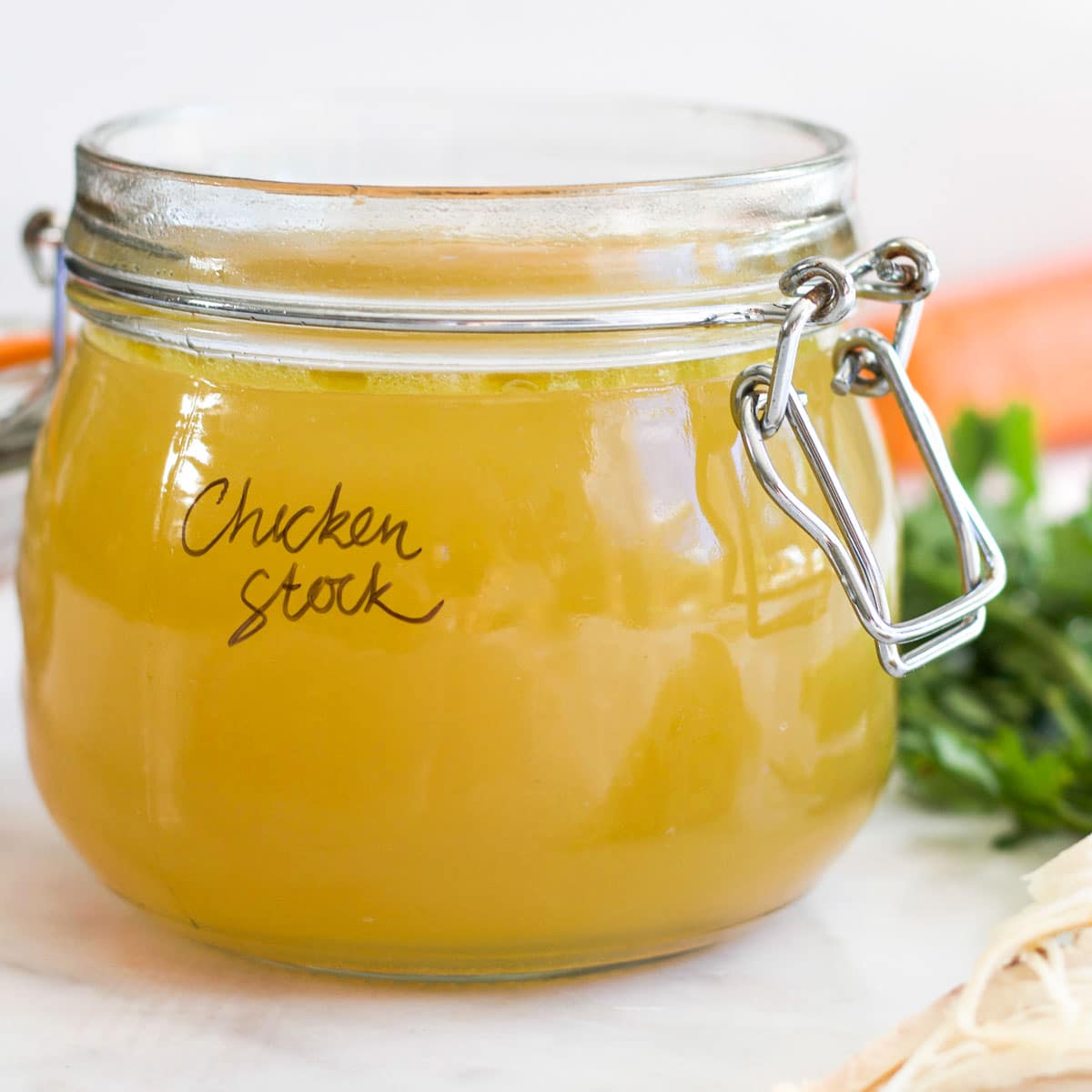
When my children were babies, I learned how to make chicken stock so that I could make meals that were free from salt and additives. Because it is so easy, I still make batches regularly.
Jump to:
What is Chicken Stock and Why Make Your Own?
Chicken stock is a liquid made with chicken bones, meat, vegetables and water. It is cooked slowly for a number of hours and is used as a basis for a tasty soup or as the liquid component in dishes such as stews, curries, sauces and risotto.
Making your own
- allows you to control ingredients to suit your family's age/stage and dietary requirements.
- makes good use of a carcass and leftover scraps from your roast chicken as well as vegetable scraps which would otherwise be discarded.
- It saves you buying boxed and cubed stock.
Video Tutorial
Ingredient Information
For the full recipe, with ingredient amounts, scroll to the recipe card at the bottom of the post.
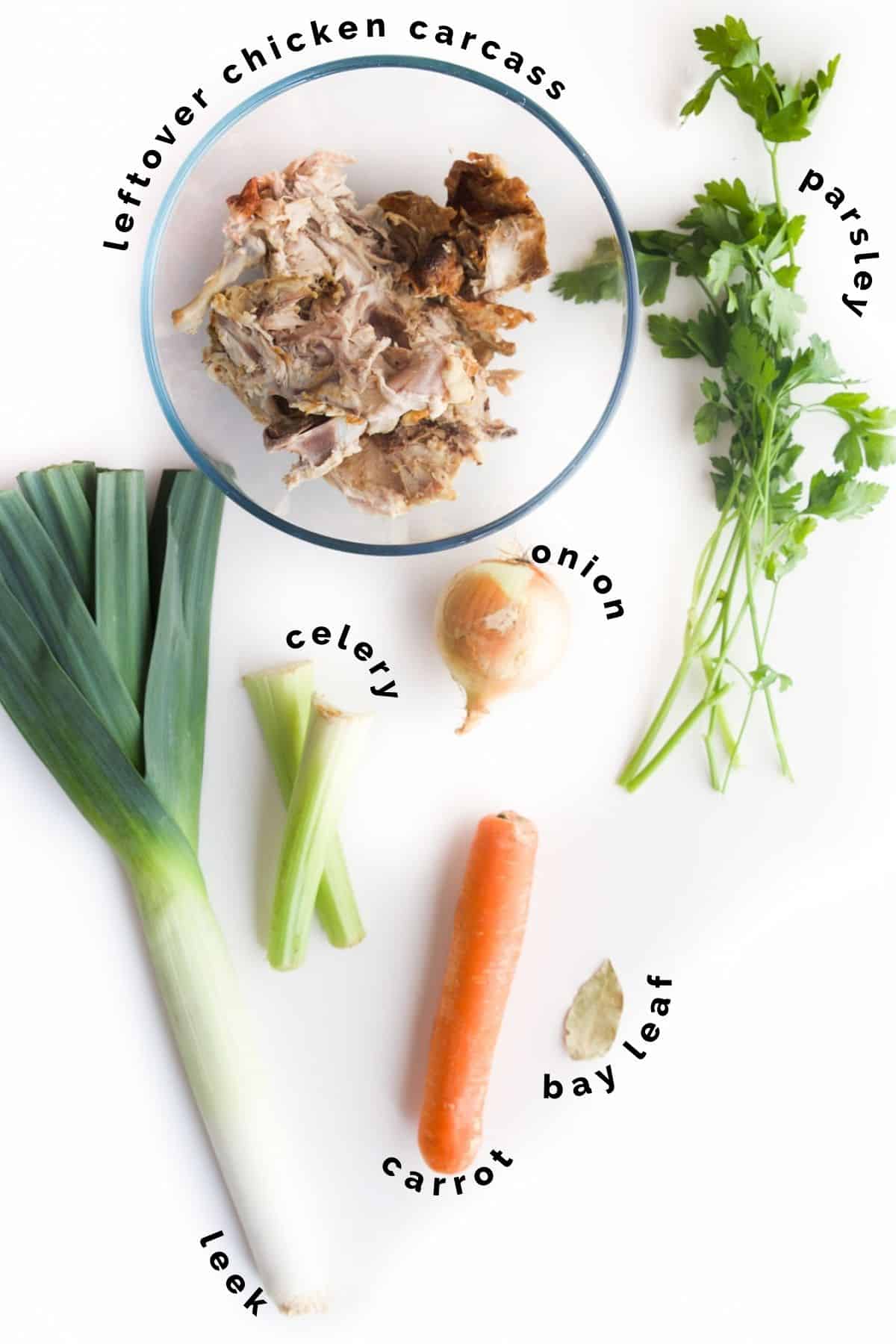
- Chicken - I usually make homemade chicken stock with a carcass and the leftover scraps from a roast chicken.
You can also make stock from a raw chicken carcass (the skeletal remains, including the bones and cartilage, once all the meat from the chicken has been removed) or chicken pieces such as legs, thighs and wings.
- Vegetables & Herbs - Vegetables and herbs add to the flavour and nutrition of the stock. It is a great way to use up vegetable scraps or vegetables that are coming to the end of their life. I usually use...
Carrots (including the peel and ends)
Onions
Celery (including the leaves)
Leek (green and white parts)
Parsley
Bay leaves
How to Make Chicken Stock
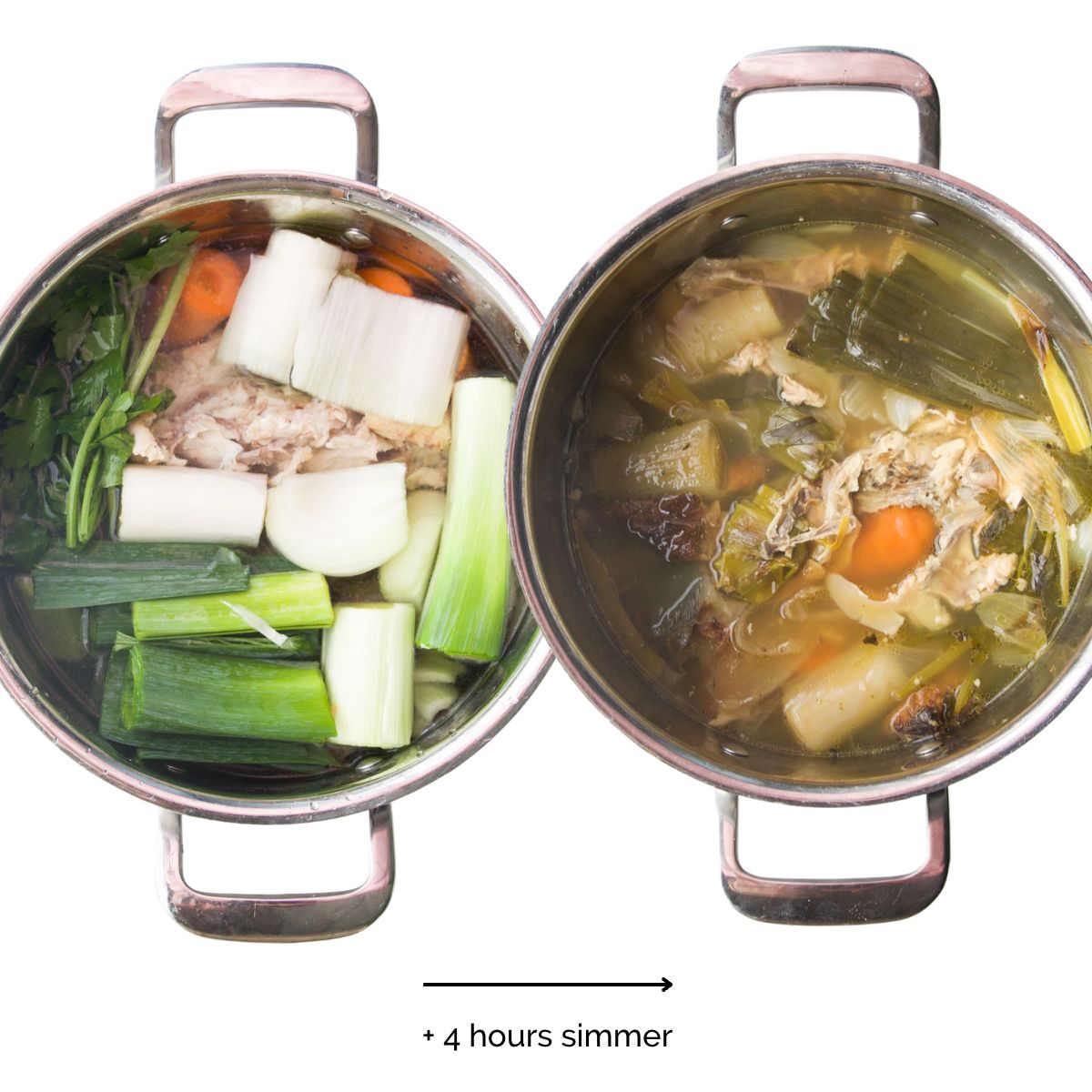
- Add all ingredients to a large stock pot - Place the chicken carcass, vegetables, herbs and water into a large stock pot. Add around 3 litres of water, ensuring that is covers all the ingredients. If needed, rearrange the carcass and vegetables to fit more snugly in the pot.
- Bring to a boil and then reduce to to a low simmer. You will probably notice foam accumulating on the surface, use a ladle or spoon to carefully skim off the foam and discard it. This helps to maintain a clear stock.
- Simmer 4 hours - Partially cover
- Strain - Position the lid on the pot to hold back the bones and vegetables, and pour the liquid through a fine mesh strainer into another pot or bowl. If you prefer you can remove the solids with a slotted spoon before straining. There should be approx. 2 litres of chicken stock. If you find yourself with a lot more, you may have to reduce it on the stove to avoid a weak-flavoured stock.
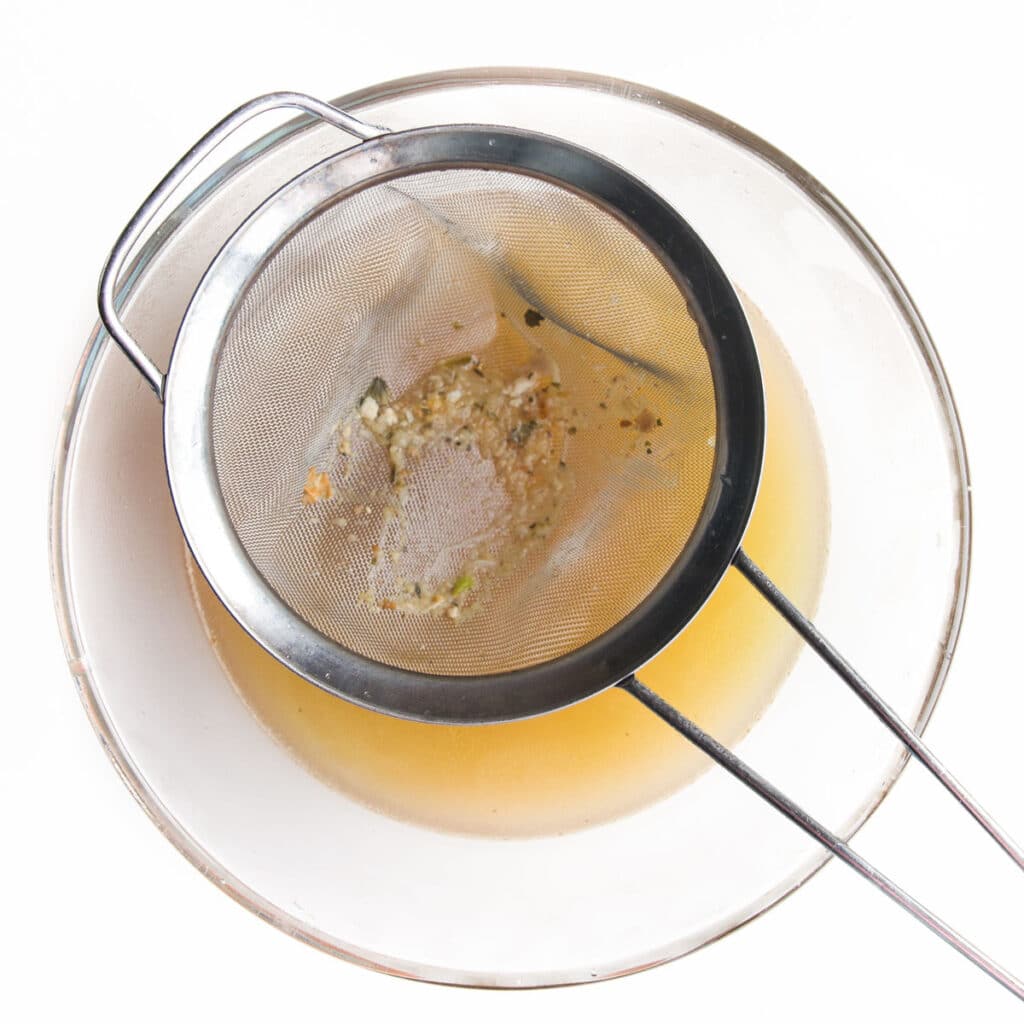
Great Uses For Homemade Chicken Stock
This baby friendly chicken stock in an excellent choice for your little one's meals. It is perfect for recipes that call for chicken stock or water, as it enhances the flavours without the need for salt, which is not recommended for baby food. Some ideas include:
- Baby Purees - Enhance the taste and texture of savoury purees that call for liquid like this lentil puree, green bean puree or chicken puree.
- Soups - Elevate the flavours of soups while reducing the salt content. Try it in recipes like courgette (zucchini) soup, baby chicken soup or carrot and orange soup.
- Stews - Add depth to chicken and beef stews such as chicken and chickpea stew, slow cooker chicken casserole, or slow cooker beef stew
- Curries - Infuse your curries with extra flavour, try it in delicious recipes such as sweet potato chickpea curry, red lentil curry or this fruity chicken curry.
- Rice dishes - Perfect in this vegetable risotto.
- Pasta sauces - Elevate the flavour profile of dishes like carrot pasta sauce or veggie pasta sauce by incorporating the deliciousness of homemade stock.
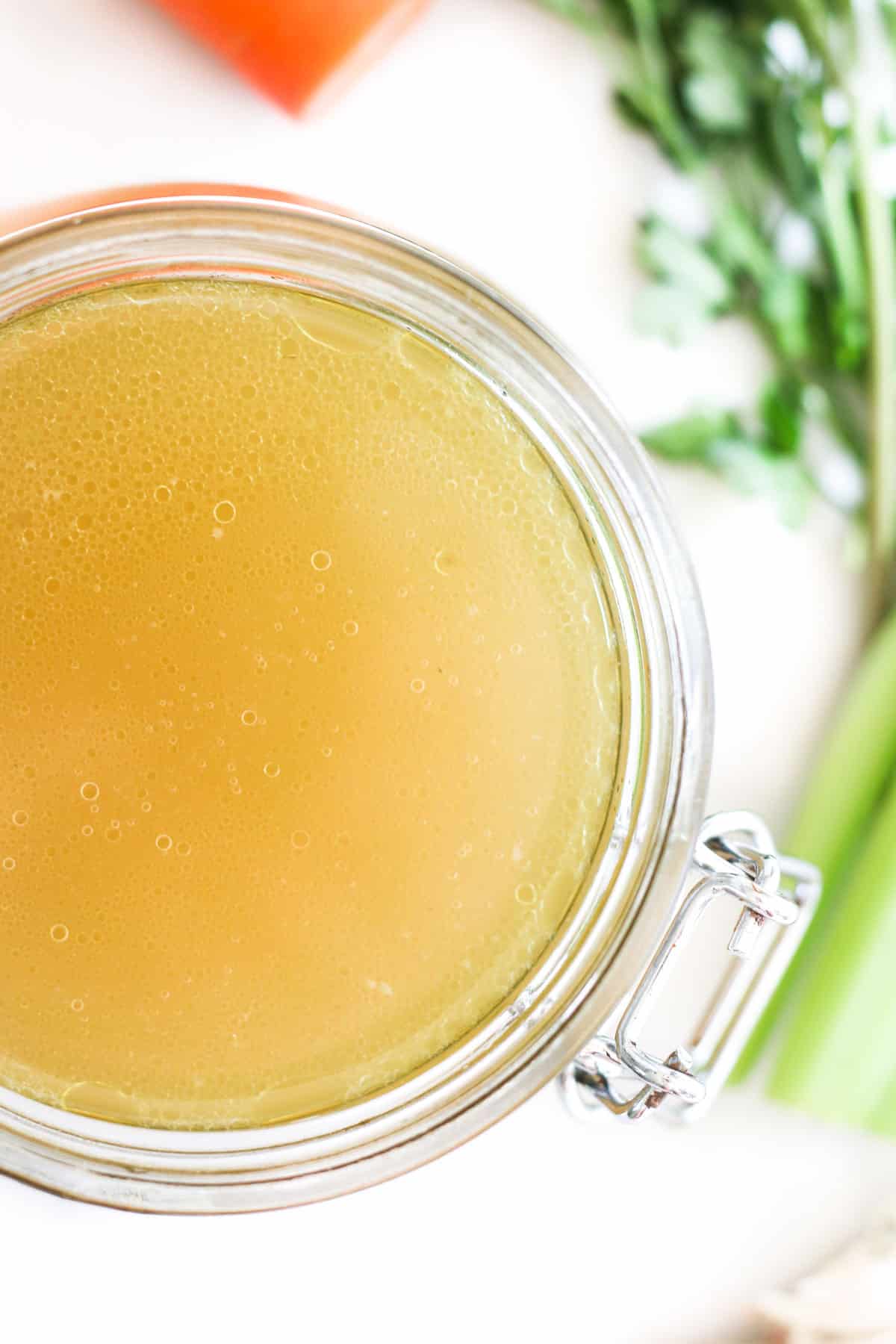
Recipe FAQs
All the goodness from the long slow cooking of bones, meat and vegetables makes for a nutritious ingredient in your cooking. Because you are making the stock yourself you can control the sodium content which is essential when cooking for babies.
Homemade chicken stock can appear greasy but the fat contained in the stock provides great flavour and enriches soups, gravy and sauces.
If you wish to remove some of the fat, cool the stock quickly and it will be easy to remove from the surface before use.
When you simmer a chicken carcass for long enough, you extract the collagen from the bones. This collagen in the bones is what causes the cooled down stock to gel. It is completely natural and will only happen in well-made stock. Once you reheat it, it will melt and return to a liquid.
You can use this chicken stock in baby food starting from 6 months.
It should be used as an ingredient and not served as a replacement to solid foods. Never serve this as a replacement for formula or breastmilk.
Refrigerating - Cool the stock and transfer it to airtight containers. Refrigerate immediately and keep for up to 4 days.
Freezing - Cool then transfer to airtight, freezable containers. The stock will last for up to 6 months in the freezer.
Once thawed you can not refreeze, it is, therefore, a good idea to freeze in small amounts. This way you can just take what you need from the freezer.
If cooking for a baby it is a good idea to freeze in ice cube trays or small baby food containers (pictured below). You only need small amounts so doing this allows for very little wastage. Once frozen in the ice-cube trays, transfer to a freezable container/ziplock bag.
If cooking for a family, you may wish to freeze in larger amounts. Around 500ml (2 cups) is a useful amount to freeze per container.
I just dispose of them. Once they have been used to make stock, they have been well stripped of both flavour and nutritional value.
You may also like
Looking for more healthy kid recipes?Sign up for my free recipe newsletter to get new family friendly recipes in your inbox each week! Find me sharing more kid-friendly inspiration on Pinterest and Instagram.
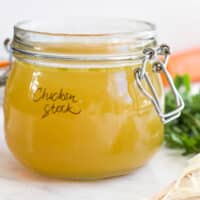
Chicken Stock
Equipment
- 1 Large Stock Pot (at least 5 litre / 5 quarts)
Ingredients
- 1 Leftover bones and skin from 1 large cooked or raw chicken carcass (or 2 smaller roast chickens) *SEE NOTE 1
- 1 Large Onion quartered
- 1 Leek cut into large chunks
- 2 Celery Stem cut into 4, use the leaves too
- 1 Carrot, unpeeled, cut into 4
- 1 Small Bunch Parsley stems and leaves
- 1 Bay Leaf
- Water to cover approx. 3 litres/3 quarts
Instructions
- Place all the chicken stock ingredients into a large stockpot and fill approx 3 litres/3 quarts of cold water, enough to cover the ingredients.
- Bring to a boil and then immediately reduce heat to bring the stock to a low simmer.
- Simmer, partially covered, for at least 4 hours. For a clearer stock, skim off any foam that comes to the surface.
- Strain the stock to separate out the solid pieces. (Position the lid on the pot to hold back the bones and vegetables, and pour the liquid through a fine mesh strainer into another pot or bowl. If you prefer you can remove the solids with a slotted spoon before straining.) Discard the solids.
- Season to taste (SEE NOTE 4)
- Pour the stock into suitable containers for storage, this will also help it cool faster. Allow to cool then refrigerate / freeze.
Video
Recipe Notes
- Use one large chicken carcass or two smaller ones raw or left over from roast chickens. You can also use chicken pieces, such as legs, thighs, wings and feet.
- Stock is great for using up vegetables that are coming to the end of their life or vegetable scraps (e.g carrot tops, peelings etc) The above vegetable measurements are a guide only.
- You should end up with approx. 2 litres / 2 quarts of stock. If you find yourself with quite a bit more, you may wish to reduce it by simmering on low (or the stock will be too weak). If you have a lot less than 2 litres you can top up with water.
- Chicken Stock is an ingredient, not a finished product. It should have a chicken taste but shouldn't be overpowering. It is not a soup. A little seasoning can bring out flavour. Do not season if using to make baby food.
- Refrigerate for up to 4 days or freeze for up to 6 months.
- If you wish to remove some of the fat, cool the stock quickly and it will be easy to remove from the surface before use.
- When you simmer a chicken carcass for long enough, you extract the collagen from the bones. This collagen in the bones is what causes the cooled down stock to gel. It is completely natural and will only happen in well-made stock. Once you reheat it, it will melt and return to a liquid.
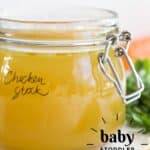
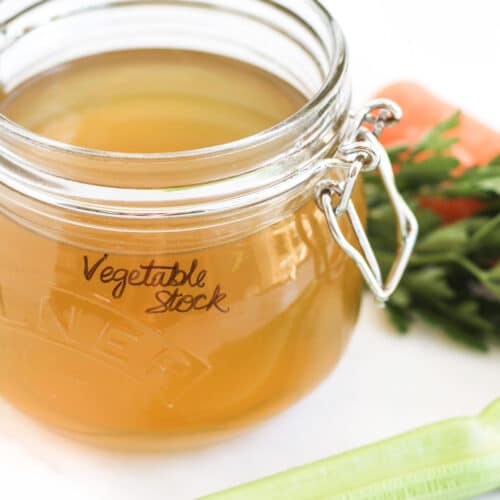
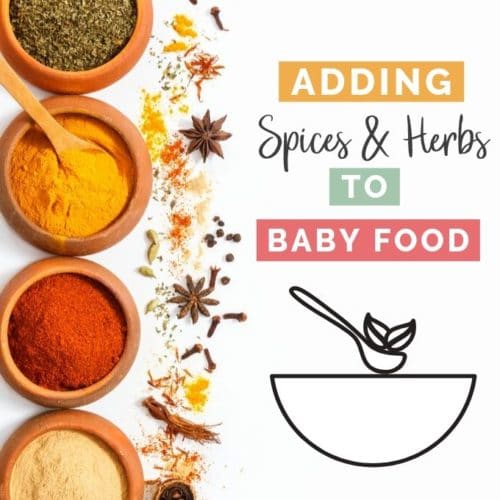
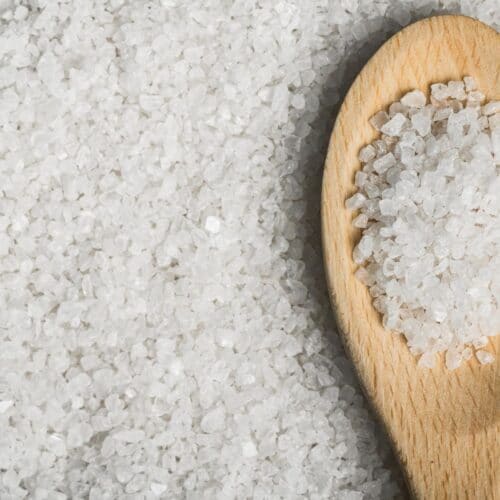
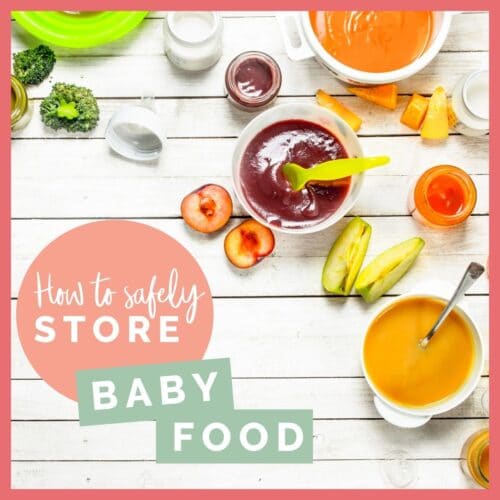
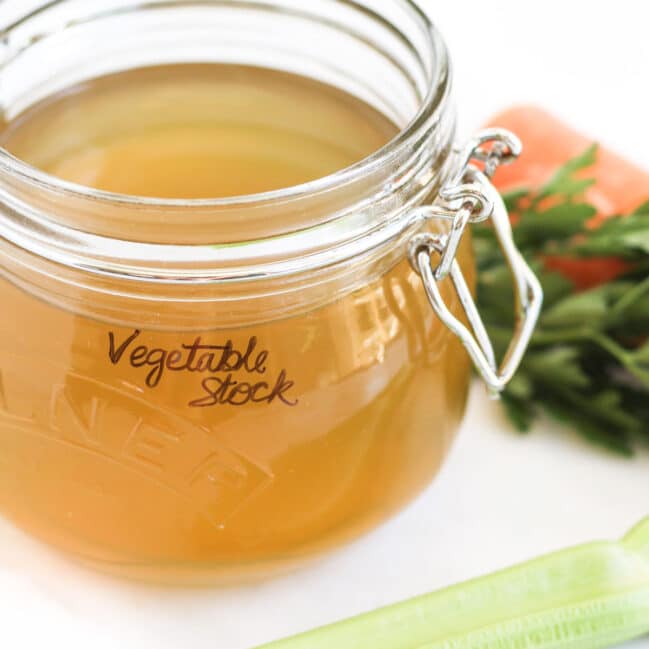
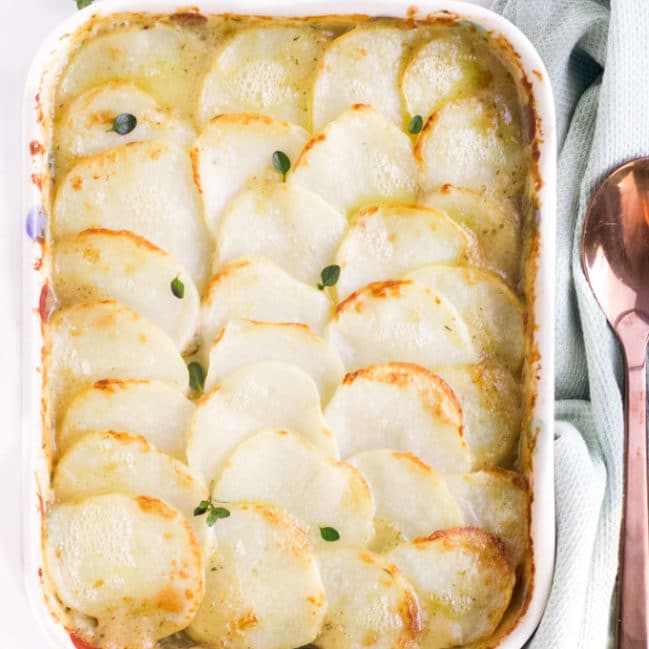
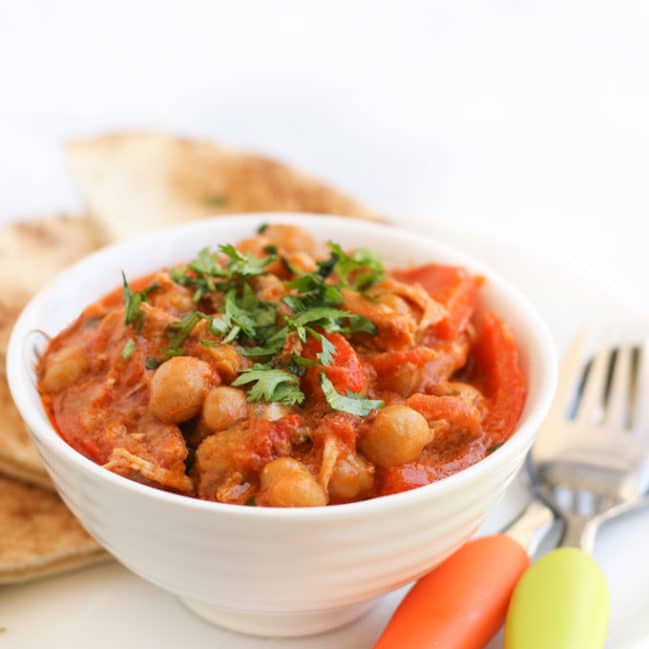

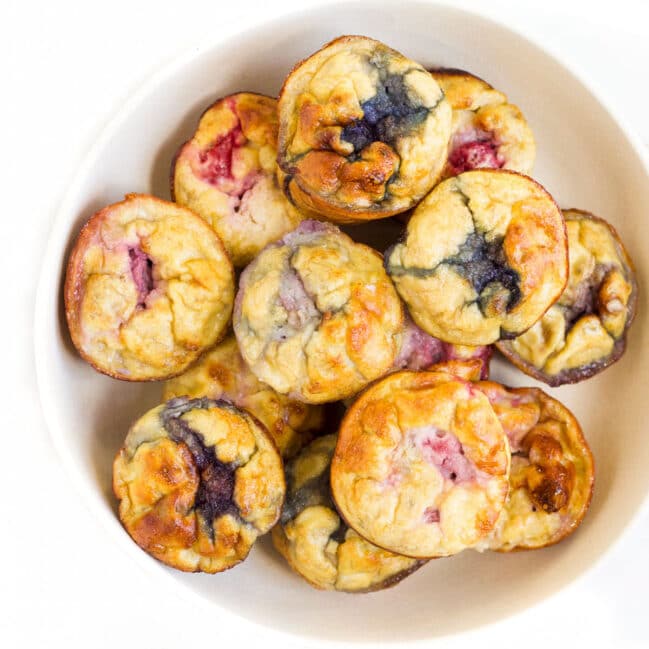
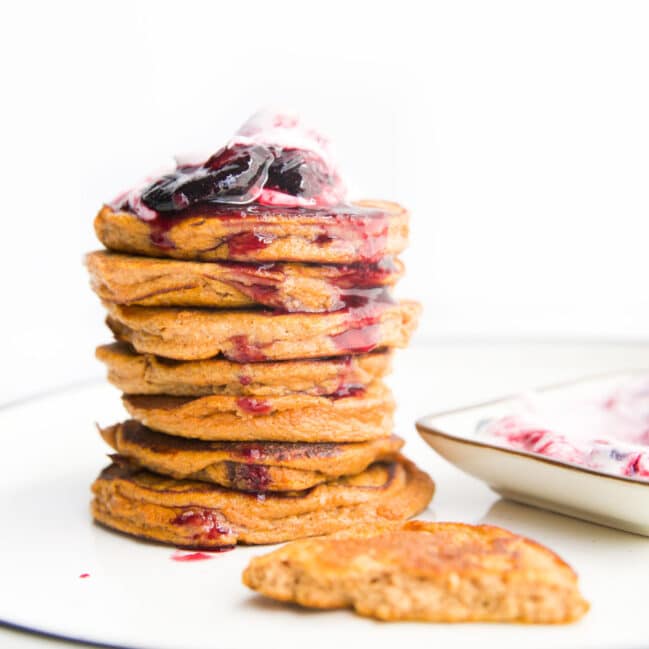
Leave a Comment